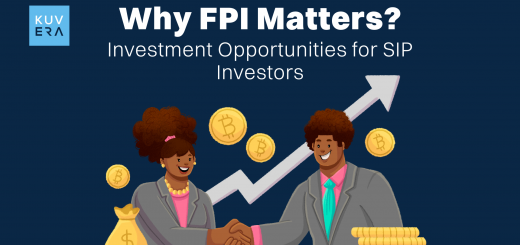Have you ever wondered why a mutual fund returns investment vehicle carries the rather formal title of “trust”? It might seem a bit archaic, especially in today’s fast-paced financial world. Yet, this designation is not merely a formality; it reflects the fundamental structure and legal framework that underpins the entire concept of mutual funds. Understanding this connection allows you to appreciate the inherent safeguards and protections built into your investment.
To grasp this concept, let us first explore the essence of a “trust.”
In its simplest form, a trust is a legal arrangement where one party (the trustee) holds and manages assets for the benefit of another party (the beneficiary). This structure creates a fiduciary duty, meaning the trustee must act in the best interests of the beneficiary.
This principle forms the bedrock of mutual fund operations.
Learn about mutual funds as a trust in this blog.
The Trust Structure in Mutual Funds
When you invest in a mutual funds India, your money does not directly go to the fund management company. Instead, it becomes part of a pool of assets held in trust. This trust is established and governed by a trust deed, a legally binding document that outlines the roles and responsibilities of all parties involved.
The rationale behind this structure is to ensure the segregation and protection of investor assets. The trust acts as a separate legal entity, distinct from the fund management company (asset management company or AMC). This separation provides a layer of security, safeguarding investor funds from any financial difficulties the AMC might face.
The Role of Trustees: Guardians of Investor Interests
At the heart of every mutual fund trust lies the board of trustees. These individuals are independent professionals entrusted with the crucial responsibility of overseeing the fund’s operations and ensuring adherence to regulatory guidelines.
1. Oversight and Supervision
Trustees act as vigilant guardians, monitoring the AMC’s activities and ensuring they align with the trust deed and regulatory requirements. They scrutinise investment decisions, expense ratios, and compliance procedures.
2. Protection of Investor Rights
Trustees are obligated to act in the best interests of the unit holders (investors). They serve as a check on the AMC, preventing any potential conflicts of interest or malpractices.
3. Appointment and Removal of AMC
Trustees have the authority to appoint and, if necessary, remove the AMC. This power ensures accountability and allows for intervention if the AMC fails to perform its duties effectively.
4. Ensuring Compliance
Trustees are responsible for ensuring that the fund complies with all applicable laws and regulations. This includes adhering to investment restrictions, disclosure requirements, and reporting obligations.
Essentially, trustees serve as an independent layer of protection for investors. They are the watchdogs, ensuring that the AMC acts responsibly and ethically.
How Trust Structure Differs from Other Investments
The trust structure distinguishes mutual funds from other investment vehicles, particularly those lacking a similar framework. For example, direct equity investments do not involve a trust structure. Investors directly own the shares of the company.
The involvement of a trust and trustees provides a higher level of transparency and accountability. Investors have the assurance that their funds are being managed by a regulated entity under the watchful eye of independent professionals. This structure provides a sense of security, especially for those new to investing. Additionally, passive investing with mutual fund models also operate within this trust framework, providing the same security measures.
The Importance of Transparency and Regulation
The trust structure, combined with stringent regulatory oversight, ensures transparency in mutual fund operations. Regulatory bodies, such as the Securities and Exchange Board of India (SEBI), impose strict guidelines on mutual funds, covering everything from investment disclosures to expense ratios.
This regulatory framework fosters investor confidence and promotes the growth of the mutual fund industry. It allows you, the investor, to make informed decisions based on reliable information.
Taking Action: Start SIP Now
Understanding the trust structure reinforces the importance of informed investing. If you are considering investing in mutual funds, consider to start SIP now. SIP investing and mutual fund SIP make investing simple. Systematic Investment Plans allow you to invest regularly, regardless of market fluctuations, and benefit from the power of compounding. When you invest through a mutual funds India SIP, you participate in a trust structure designed to protect your interests.
Why the Trust Matters to You
The trust structure is not just a legal technicality; it directly impacts your investment experience. It provides:
- Security: Your assets are held in a separate legal entity, protected from the AMC’s financial risks.
- Accountability: Trustees ensure that the AMC acts in your best interests.
- Transparency: Regulatory oversight and disclosure requirements provide clear information about the fund’s operations.
- Peace of Mind: Knowing that your investment is protected by a robust structure allows you to focus on your financial goals.
Wrapping Up
The trust structure is a fundamental aspect of mutual funds, providing a crucial layer of protection and accountability. It ensures that your investments are managed responsibly and ethically. You can invest with confidence and make informed decisions by understanding the role of trustees and the regulatory framework. The trust structure is a key reason why many investors choose mutual funds as a cornerstone of their financial planning. It allows them to participate in the market while benefiting from the oversight and protection of a well-established framework. It is a structure designed to serve the unit holder. You should always review the trust deed before investing.
Interested in how we think about the markets?
Read more: Zen And The Art Of Investing
Watch here: Learn about the F&O craze in India












